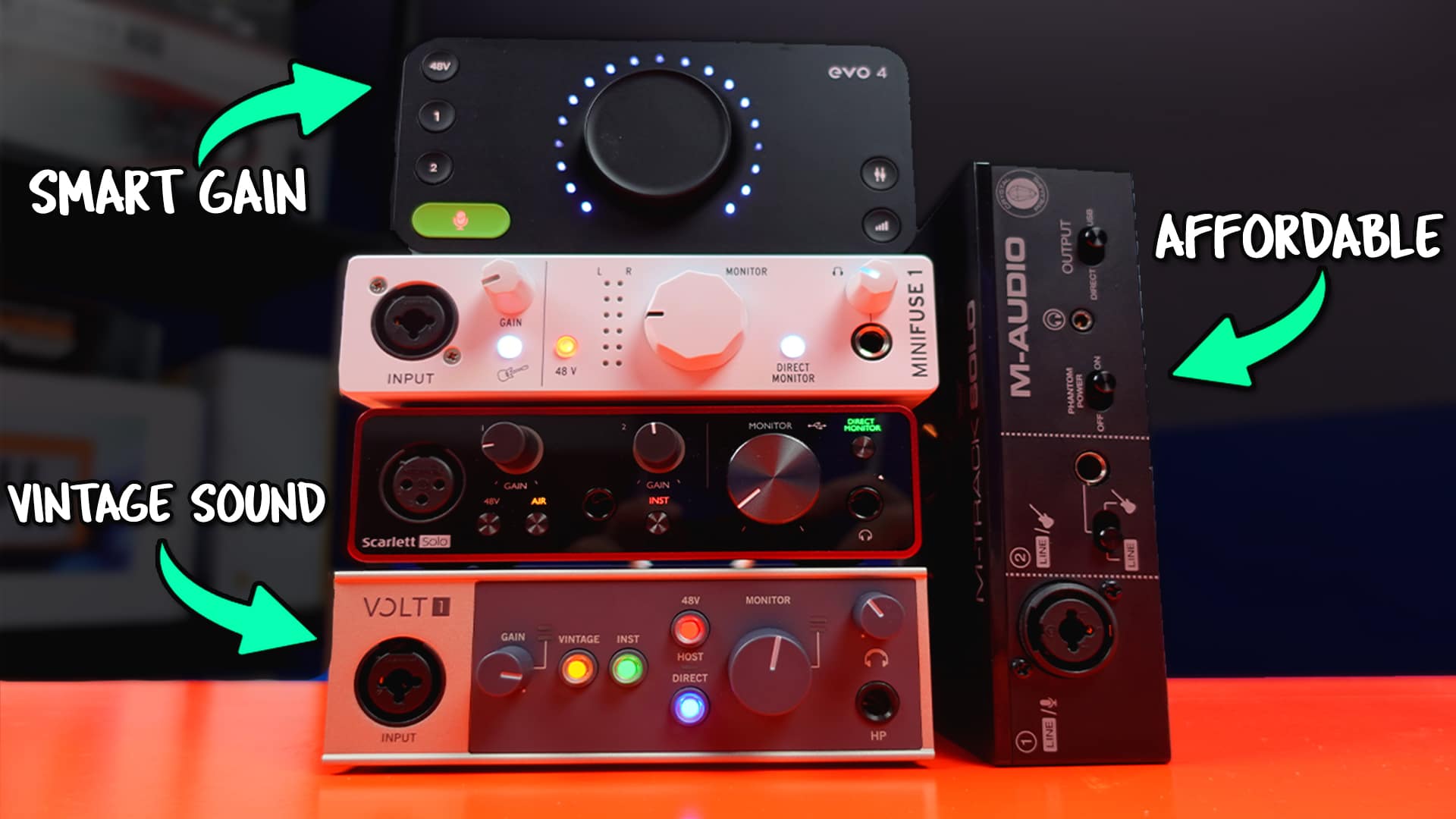Do you want to buy an audio interface but are feeling a little overwhelmed at the huge number of different models, features, and prices?
In this feature i’ll share the best audio interfaces for GarageBand users!
M-Audio M-Track Solo
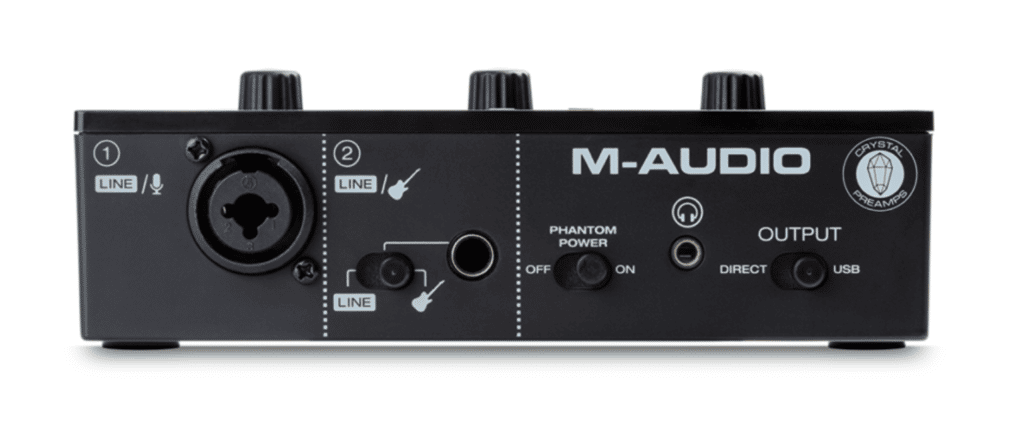
What really stands out about the M-Audio M-Track Solo is, unsurprisingly its price.
With the M-Track Solo you’re getting a combo jack for an XLR microphone or 1/4” instrument jack as well as a dedicated instrument input, 48V phantom power, and the ability to directly monitor your signal.
Its essentially got all the features you need to get up and running for $50/£38. That is incredible value.
At that price it’s obviously not perfect . The M-Track Solo is made completely of plastic for one, plus it’s the only interface in this video that only has a bit depth of 16bit and sample rate of 48kHz.
With that said however, I genuinely believe you will not find a better audio interface at this price point. It has everything beginners need to get set up and start recording (including a sweet selection of free virtual instruments and effects) and is small enough that mobile musicians can slip it into a backpack and take it anywhere.
Grab your M-Audio M-Track Solo Here: USA / UK
Arturia Minifuse 1

Coming in at around $99/£89, the Arturia Minifuse 1 offers a huge jump up in quality across the board when compared to the M-Track Solo.
You only have a single XLR combo input here, but the superior sound quality more than makes up for it.
You’re getting all of the essentials here. 48v phantom power, direct monitoring, as well as a 1/4’ headphone output.
The Minifuse 1 also has a real time, colour coded output meter, as well as a backlit volume knob for the input, which lights up red when your inputted signal is too high.
The feature that really makes the Minifuse 1 unique however, is hidden away on the back.
Alongside outputs for studio monitor speakers and the USB-C output used to connect the Minifuse 1 to your Mac or iOS device is an extra USB-A port. This is ridiculously handy as it allows you to attach things like USB keyboards directly to the interface. Super duper convenient.
Couple that with a fantastic suite of free software and instruments and it’s easy to recommend the Minifuse 1 to anyone just getting started with audio production but especially synth and keyboard lovers.
Grab your Arturia Minifuse 1 here: US / UK
Audient Evo 4
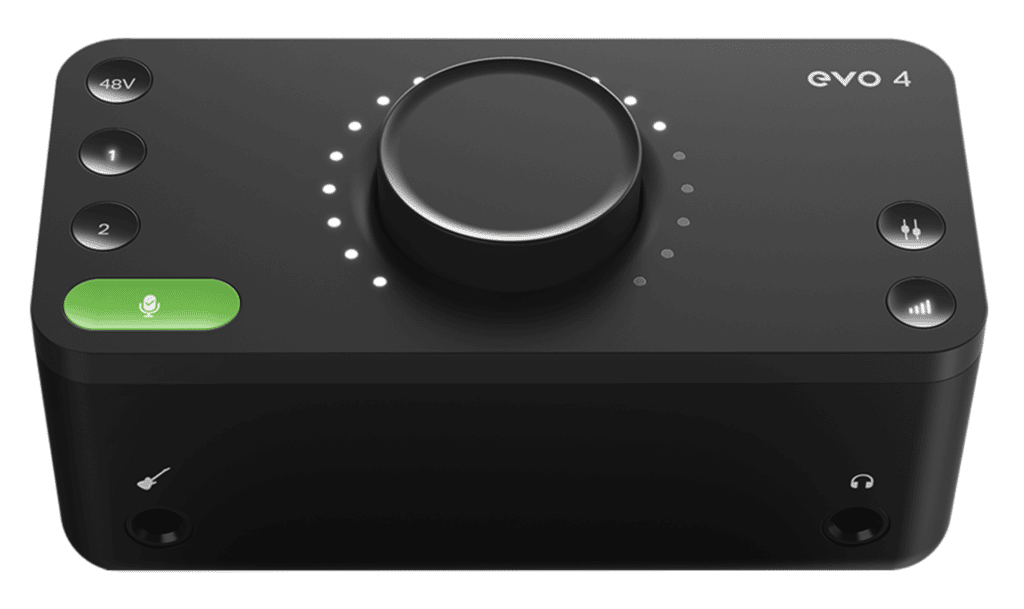
Next up and going for around $129/£100 is the Audient EVO 4, a really flexible audio interface with a truly unique design.
The 2 combination ports on the back of the interface will take XLR microphone and regular jack inputs, plus there’s a dedicated guitar input located on the front.
Everything here from the headphone output volume, to the gain for each input is controlled via the big knob right in the middle of the interface. It’s a really different and intuitive way of working.
One of the standout features of the EVO 4 is Smart Gain.
If you’re a beginner and aren’t quite sure how to properly set your input gain to avoid things like clipping, the Evo 4’s smart gain feature can automatically set your gain for you.
Hit the green Smart Gain button, select the input you want to set, hit the smart gain button angain then play or sing for 10 seconds while Smart Gain analyses your inputs and it will set the right gain for each of them. This is incredibly useful if you’re perhaps a bit unsure how to properly set the gain for different microphones or instruments or if you just want to dive in and start recording with the minimum of fuss.
The Audient Evo 4 comes with a good selection of software too, including some iOS specific freebies (a rarity when it comes to audio interfaces.)
It’s a really flexible, budget friendly audio interface that might suit mobile musicians in particular perfectly.
Grab an Audient Evo 4 here: US / UK
Focusrite Scarlett Solo
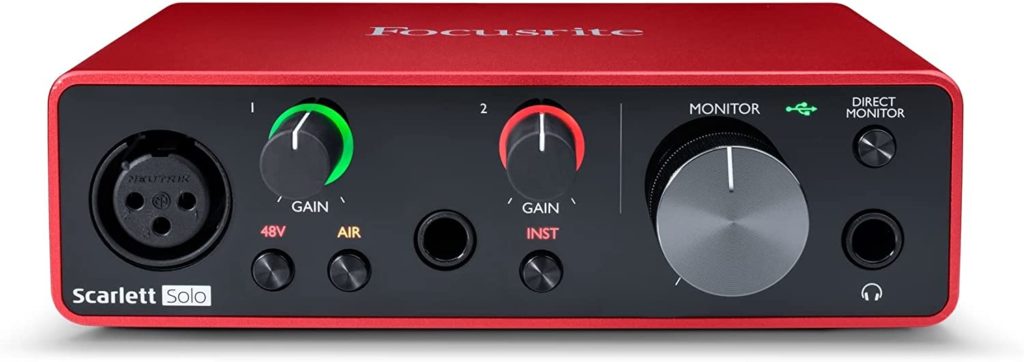
Up next and coming in at around $150/ £115 is an audio interface that probably needs no introduction.
This Focusrite Scarlett Solo is one of the best selling audio interfaces ever and it’s really easy to see why.
Fantastic build quality. A dedicated XLR input. A separate instrument input. Plus all the other features you would expect like 48v phantom power and direct monitoring.
It also has those iconic Scarlett gain halos around the input gain knobs, that light up green when your inputted signal is optimum level, and red when you’re clipping.
Its an incredibly well put together, great sounding and dependable interface, but what really sets it apart is the inclusion of Focusrite’s trademark ‘AIR’ mode.
Focusrite claim that activating AIR on the XLR input will give your recordings a brighter and more open sound. This does sound like a gimmick, but actually does make a massive difference to your recordings. Especially when it comes to acoustic and vocal recordings.
While perhaps not quite as exciting as some of the other interfaces on this list, there’s a reason why this is one of the most popular interfaces on the planet. It just works. And will continue to work – probably for years.
Pick up a Focusrite Scarlett Solo here: US / UK
Universal Audio Volt 1
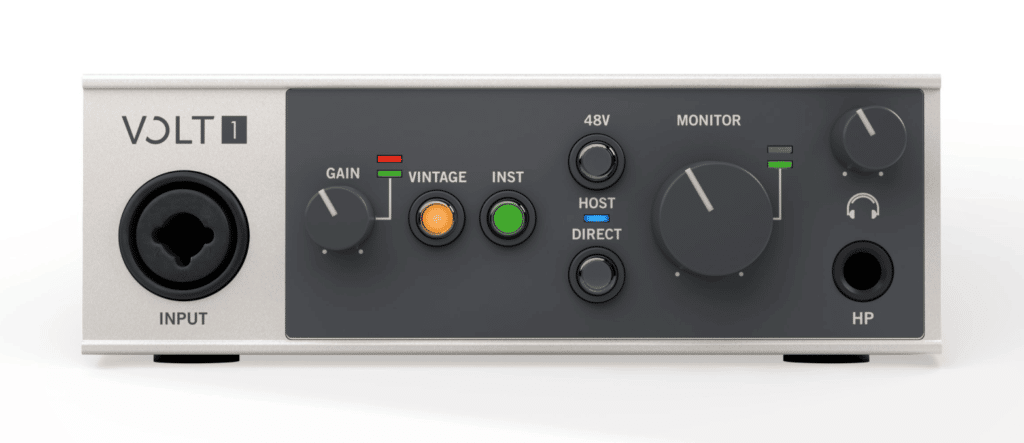
The last audio interface on this list, the Universal Audio Volt 1 is a bit of an anomaly.
It’ll cost you around $150/£120 and on paper, doesn’t seem like all that good of a deal really…
The Volt 1 has a single XLR & 1/4″ combo input, phantom power, direct monitoring and all that other good stuff found on every other interface i’ve talked about so far.
There are a few things you won’t get with other audio interfaces however.
Universal Audio are famous for their premium audio interfaces, the Apollo series being the most famous. They’ve managed to pack a lot of that premium feel (and more importantly sound quality) into their budget line of interfaces, which results in the Volt range producing sound quality that punches far above their weight.
If all you are interested in is producing the most pristine crystal clear audio possible, this is the interface for you.
Like the Scarlett Solo, the Volt 1 also features a second available ‘mode’ you can activate at the touch of a button; Vintage mode. This mode gives you the rich, full sound of an iconic UA preamp, thanks to it’s built-in tube emulation circuitry.
Throw in stellar build quality and other premium features like MIDI I/O on the back and an actual On/Off switch and it quickly becomes apparent that the Volt 1 is worth every penny of it’s hefty price tag.
Grab a Universal Audio Volt 1 here: US / UK
DISCLAIMER: Some of the links in the above article ‘The BEST Audio Interfaces‘ are affiliate links. Find out more about that here.
